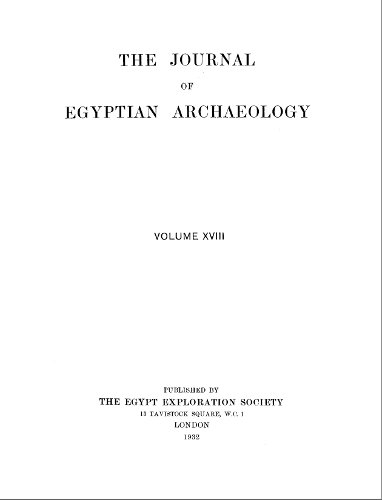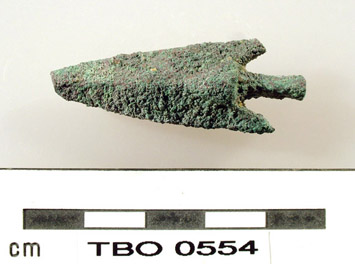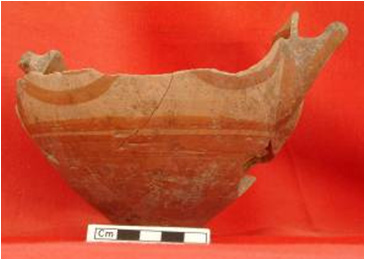The cemetery at Saqqara is one of the most important archaeological sites in Egypt. Over six kilometres long, it boasts thousands of underground burial sites, as well as the six-step Djoser pyramid – Egypt’s oldest pyramid. The ruins at Saqqara have long attracted the interest of explorers, grave-robbers and local people. Travellers first reported evidence of antiquities at Saqqara in the 16th century. The Djoser Pyramid and the smaller pyramids around it were hard to miss – but the size of the necropolis only became apparent with the advent of excavations in the 19th century. It was not until Napoleon…
-
-
Imagine getting your hands on King Tut’s mummy? Researchers at the University of California, San Diego, have created a new – relatively – low-cost virtual reality device that allows users not only to see a three-dimensional image, but to ‘feel’ it too (watch the video). From the same two California Institute for Telecommunications and Information Technology (CALIT2) engineers who created the VR system NexCave comes a new and ‘affordable’ solution for handling three-dimensional virtual objects. Tom Defanti and Greg Dawe’s heads-up virtual reality device (HUVR in short) combines a consumer 3D HDTV panel with a half-silvered mirror to project any graphic image…
-
People of the Earth An Introduction to World Prehistory by Brian Fagan The 13th edition of this internationally renowned text provides the only truly global account of human prehistory from the earliest times. Written in an accessible way, People of the Earth shows how today’s diverse humanity developed biologically and culturally over millions of years against a background of constant climatic change. Brian Fagan is one of the leading archaeological writers in the world and an internationally recognised authority on world prehistory. He studied archaeology and anthropology at Pembroke College, Cambridge University, and then spent seven years in sub-Saharan Africa working in…
-
Alexandre Piankoff was a world-renowned anthropologist and Egyptologist, who made significant progress in the field of translating religious texts. Born in 1897 in St Petersburg, Russia, Piankoff first got a taste for history when visiting the majestic State Hermitage Museum in his home city. Enthralled by the Egyptology section in particular, Piankoff studied Foreign Languages and Egyptian Philology at university, before his academic life was cut short by the First World War. Thereafter Piankoff became a fervent academic, studying at Berlin, then the Sarbonne in 1924, then the University of Paris where he obtained a Phd. The Second World War…
-
Heritage Key was recently introduced to Dr Ray Howell – a reader of history and historical archaeology at University of Wales, Newport and Director of South Wales Centre for Historical and Interdisciplinary Research (SWCHIR) – through the short film Reclaiming King Arthur. Filmed in association with University of Wales’ Institute of Digital Learning (IDL), it examined the Gwent roots of the legendary British monarch of round table fame – both the real figure, who may have been a 5th or 6th century local warlord, and the mythical Arthur championed in countless folk tales. Dr Howell’s latest area of research is…
-
Key Dates The museum was founded in 1938. In 1966, the museum and its contents were donated to the public by Alexander Keiller’s widow. Wiltshire United Kingdom Key People Alexander Keiller was an English archaeologist and businessman who excavated at Avebury in the 1930s, and re-erected many of its fallen and buried stones. The Alexander Keiller Museum documents the history of the nearby prehistoric stone circle of Avebury, in particular archaeological excavations that have taken place there. It’s housed in an old 17th century stables and threshing barn. Most of the exhibits date from the Neolithic and Early Bronze Age…
-
It’s long been a common stereotype that Akhenaten was a pacifist, someone who avoided warfare when possible. If you read Heritage Key’s article on Nazi Egyptology you will see that the Nazis hate him for that precise reason. But recent research, presented this weekend at an Egyptology symposium in Toronto, shows that the Amarna leaders – including Akhenaten, King Tut and Nefertiti – all supported a sizable fortress in the Sinai desert. Located at Tell el-Borg it was a formidable bastion. It was 120 meters east-west by 80 meters north-south. The walls were four meters thick (at the base) and it…
-
Recent archaeological work at the site of Tell Tayinat in southeast Turkey, near the Syrian border, indicates that the ancient city was the centre of a Dark Age kingdom, ruled by people from the Aegean area. In an in-depth interview Professor Timothy Harrison, of the University of Toronto, told Heritage Key about this startling theory and the evidence that supports it. Around 1200 BC life changed suddenly throughout the Mediterranean world. The Mycenaean civilization in Greece and Crete, the Egyptian New Kingdom and the Hittite Empire, all collapsed at roughly the same time. It’s not until 900 BC that archaeologists…
-
Stonehenge leaps out from its West Country surroundings like Liberace in a dole queue, so it’s no surprise that Britain’s grandest prehistoric monument has been the focus of a myriad projects since the dawn of archaeology. So what is Stonehenge’s archaeological history? And what light has centuries of excavation shed on the enigmatic treasure? Aubrey Discovers (Some of) The Aubrey Holes Stonehenge’s recorded archaeological history begins at the turn of the 17th century, with a small dig carried out by the pre-eminent physician William Harvey. Yet as much as Harvey was a pioneer of medicine, he was hardly a dab…
-
James Mellaart Pre-eminent archaeologist of the Neolithic Near East British archaeologist, James Mellaart, was born in London in 1925. His family moved to Holland where his father worked as an expert in Dutch old master paintings and drawings. At the outbreak of World War II, Mellaart secured a position at the museum in Leiden, where he worked until the war ended. Then he enrolled in University College in London where he studied egyptology. His studies led him to join the British Institute of Archaeology at Ankara, Turkey. In the early 1950s, he began an archaeological survey of Anatolia. His first…







